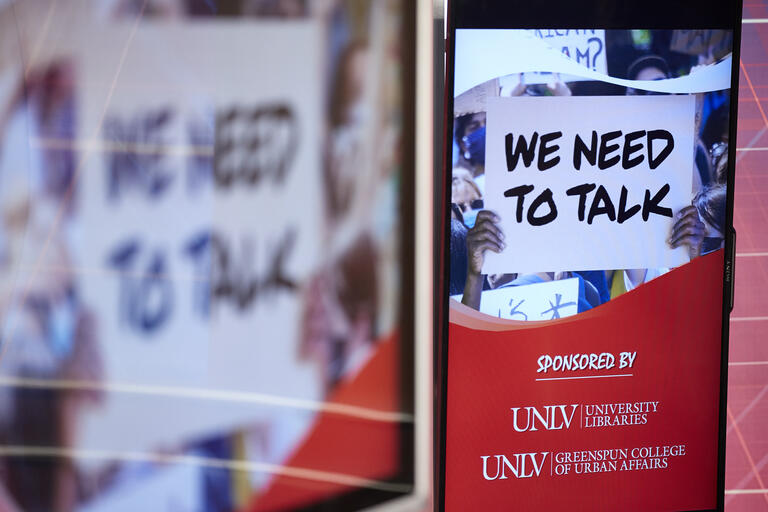There’s no question that a doctor of medicine degree is impressive. Achieving that distinction means years of academic trials and tribulations and countless study hours. And yet, as notable as the degree is, when you finish medical school you’re a doctor, but not really a doctor.
Before newly minted doctors can treat patients on their own, they must spend, depending on their chosen specialty, between three and seven years in residency training — what medical school administrators refer to as graduate medical education.
During their fourth year of medical school, students enter the grueling process of applications and interviews with multiple residency specialty programs across the country. The process culminates in Match Day the third Friday in March when graduating medical students learn where they’re headed next.
“Match Day for me was one of the most anxious days of my life,” said Dr. Joshua Goldman, an assistant professor in the UNLV School of Medicine's department of plastic surgery. Goldman completed his six-year residency at UNLV in 2018.
“It felt like the culmination of nine years of higher education and countless sacrifices. I had traveled the United States, East to West coasts, interviewing for a coveted spot in integrated plastic and reconstructive surgery. The process (the planning, the travel, the social events and interviews) took an exhausting emotional and financial toll.”
Like it’s done with everything else in the country this past year, COVID-19 has thrown a wrench in the matching process. Medical students across the country have had to deal with delayed timelines, paused rotations, postponed exam dates, and virtual interviews.
“Online interviews have been so challenging,” said Sarah Grimley, who’s a member of the UNLV School of Medicine charter class scheduled to graduate in May. She’s hoping to secure a residency in family medicine. “It’s really hard to get a feel for a program when it’s in a virtual format. When you ask residents at your interview why they chose that program, they all say, ‘The people and culture of the program,’ but it’s impossible to get a feel for that online.”
Damien Medrano, like Grimley a member of the charter class: “Sometimes you’re in interviews for four to six hours a day where you have to be constantly on, where concentration and the energy it takes is critical to making a great first impression. You not only have to be aware of what you’re saying, but you have to be aware of your body, of how they’re seeing you, the light, the camera lens. It’s definitely not easy.”
Application and interview season runs October through January. Training programs then create a ranked list of their desired applicants, and all applicants create a ranked list of their desired training programs. Because of the intensely competitive nature of the process, students typically don’t divulge their wish lists prior to Match Day, if even then.
Then “match” is determined by a Nobel Prize-winning computer algorithm managed by the National Resident Matching Program. The algorithm aligns each medical student’s list with the preferences of the directors of residency programs.
If two students are a couple and are graduating and heading to a residency at the same time, they can ask for a “couples' match” to end up in the same city. That’s what UNLV married medical students Medrano, who’s pursuing a residency in radiology, and his wife, Lauren Hollifield, who’s applying for a residency in anesthesiology, have done. While this makes the matching process even more complicated, the system tries to accommodate them.
About 75 percent of graduating medical students receive one of their top three choices.
At noon EDT on Friday — 9 a.m. at the UNLV School of Medicine — the nation’s medical students will open an envelope with their name on it to reveal the name of the residency program where they’ll do their graduate medical education.
Goldman says he’ll never forget his Match Day.
"At [Texas Tech], we all opened envelopes simultaneously. I remember the responses others had to the opening even more than my own. Immediately I was surrounded by cheers of joy, occasional tears of sadness. I, fortunately, ended up at UNLV for my residency training in integrated and reconstructive surgery. I ended up exactly where I fit, and it set me on a path to achieving my physician goals.”



